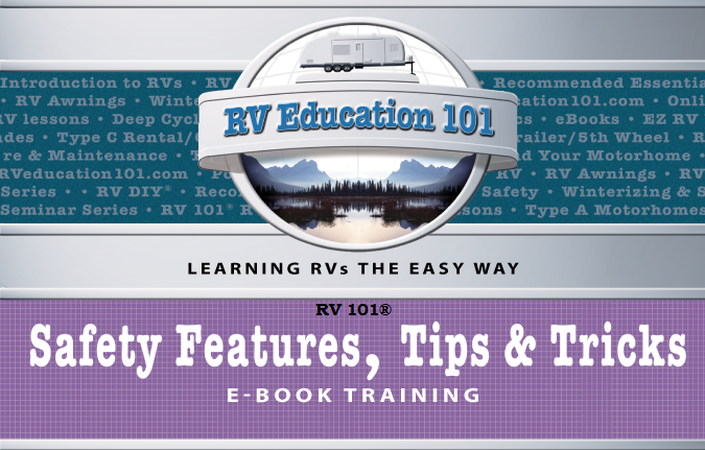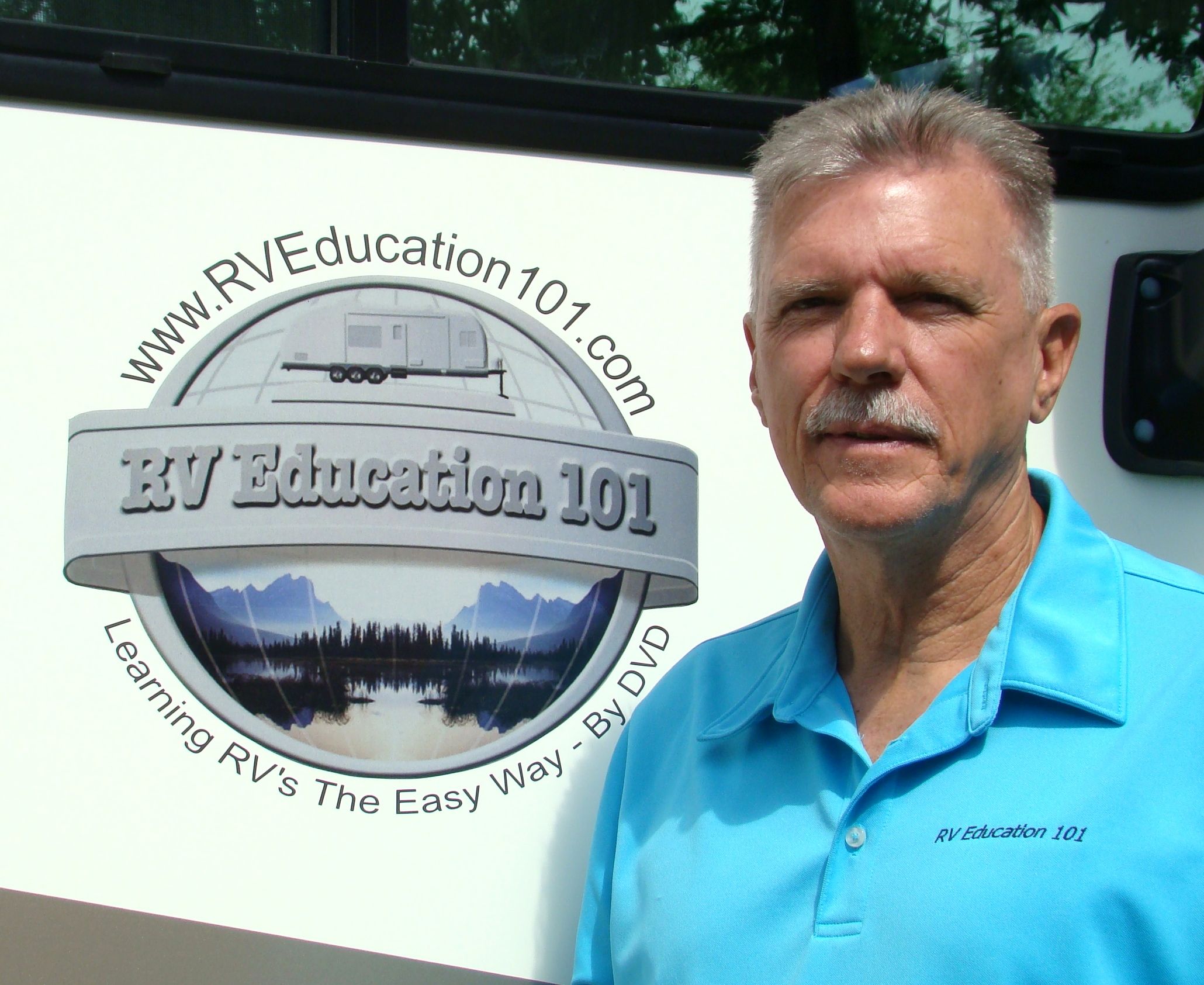
RV 101® - RV Safety Features, Tips & Tricks E-book Training Course
Understanding your RV safety equipment, and knowing how to use it gives you peace of mind when you head out on your next RV trip.
Watch Promo
DISCOVER-LEARN-ENJOY
RV 101® - RV Safety Features, Tips & Tricks E-book Training Course
This is an RV 101 online e-book training course that can be viewed from computers, tablets, and smartphones. When you enroll in our training course you have the option to simply download the e-book and read it at your leisure and/or you can participate in the online training course. I wanted to add more than just an e-book, so the course material includes the written text, short video segments, related articles written by your instructor, helpful tips & tricks, fun RV University play & learn crossword puzzles and quizzes to help you retain the information.
Owning and traveling in an RV is lots of fun. You can go where you want when you want on your own schedule. The only thing that can take the fun out of RV ownership is when you don’t understand how to protect yourself and your RV in the event something goes wrong, or if your personal safety is in jeopardy.
RVs are equipped with many safety features designed to protect you and your family, and it’s important that you understand what these safety features are and how they operate. That is my goal with this e-book course, to discuss how your RV is equipped to protect you, the RV owner, and to show you some things you can do to enhance safety when you are using your RV.
We’re going to discuss some very important safety topics like LP gas system safety, RV water system safety, RV electrical system safety, RV fire safety, carbon monoxide safety, and emergency escape plans. In addition to the safety features on the RV we are going to cover topics concerning your personal safety as well. Topics like: Getting there Safely, Travel Security, Emergency Weather Planning and more.
RV safety starts with the Recreation Vehicle Industry Association or RVIA seal. The oval shaped RVIA seal displayed on the exterior of the RV means that the RV manufacturer is in compliance with more than 500 safety requirements regarding electrical, plumbing, heating, and fire and life safety. These safety requirements are established under the American National Standards Institute (ANSI) A119.2 Standard for Recreation Vehicles.
Knowing that the RV was manufactured with safety in mind is a good start, now let’s take a look at some of the safety equipment and features you’ll find on your RV.
This RV Safety online e-book course includes:
RV Safety Features, Tips & Tricks downloadable PDF e-book
Chapter 1 - LP Gas System Safety
Chapter 2 - RV Water System Safety
Chapter 3 - RV Electrical System Safety
Chapter 4 - RV Fire Safety
Chapter 5 - Carbon Monoxide Safety
Chapter 6 - Emergency Escape Plan
Chapter 7 - Getting there Safely
Chapter 8 - RV Travel Security
Chapter 9 - Home Security
Your Instructor

Chief Warrant Officer Three Mark J. Polk was awarded a first place US Army maintenance award from General Shelton.
Mark started RV Education 101 in 1999
History past and present:
- Writer/ Columnist/ Contributor for numerous RV consumer & RV trade newsletters and magazines (RVBusiness, FMCA, RV News, RV Companion, Pop-Up Times, RV Free Wheelin’, Trail Blazer, RV Executive Today and RV Magazine,)
- RV Technical Writer for several newsletters and blogs, (Go RVing blog, Family Motor Coach Association (FMCA), RV Net Expert Blog, RV University This Week, Camping World e-newsletter, RV Travel, RV Trader, Rollin On TV website, HGTV and Geiko Insurance blog)
- Script and host television segments for Rollin On TV
- Scripted & hosted television segment titled RV Savvy for four seasons (52 episodes) with RVTV on The Outdoor Channel and three Canadian TV Channels.
